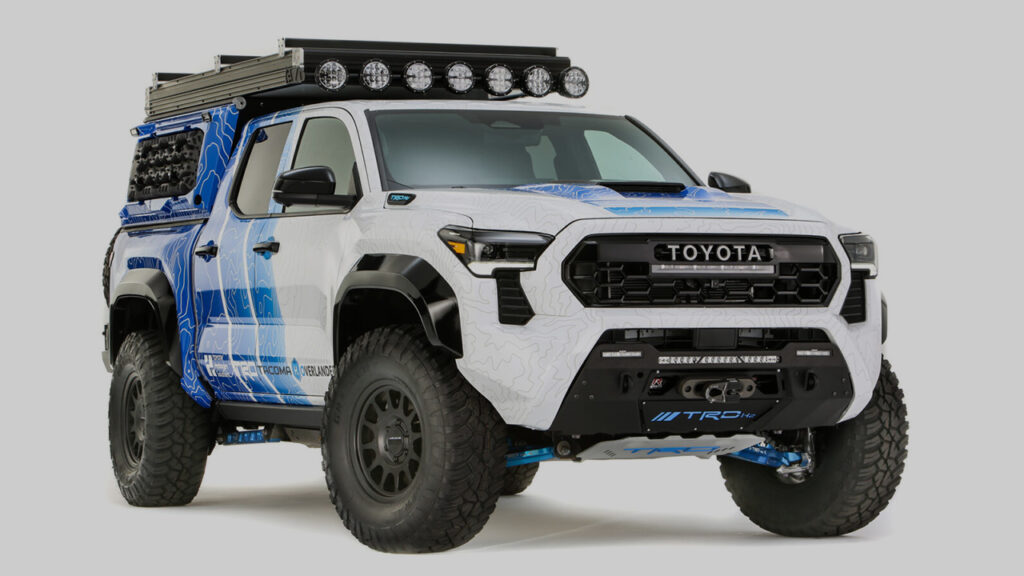Hydrogen-powered campers have arrived, and the most notable recent developments include Toyota’s Tacoma H2-Overlander Concept. Revealed at SEMA 2025, this concept combines a hydrogen fuel cell powertrain with battery-electric support on a TNGA-F truck platform for camper and overlanding use. Excitingly, the camper has enough power even to charge an EV during the camping trip, and can also generate usable water for campers. This camper build highlights the potential of hydrogen fuel cells and the places they can be taken without making much impact on the natural surroundings.
The Toyota Tacoma H2-Overlander was engineered and built by Toyota Racing Development teams in California and North Carolina with help from Toyota’s North America R&D. The camper uses a second-generation Toyota Mirai hydrogen fuel cell and three tanks holding six kg of hydrogen inside its frame. The fuel cells create electricity by combining hydrogen and oxygen while producing only water as a byproduct for a sustainable touch.
The powertrain is augmented by a 24.9-kWh lithium-ion battery pack. The hydrogen fuel cell technology and battery together power a 225-kW front motor and a 188-kW eAxle. It combines the fast power and smooth control of an electric vehicle with the quick refueling advantage of hydrogen fuel. Additionally, the conceptual RV features a 15-kW power takeoff capable of running a tiny home off-the-grid or charging two EVs simultaneously via dual NEMA 14-50 outlets.
The Toyota Tacoma H2-Overlander is a special truck powered by hydrogen fuel cells and batteries that generates 547 horsepower from two electric motors instantly and quietly. It has a four-wheel-drive system, with a front limited-slip differential and rear electronic locking differential borrowed from bigger trucks to handle bumpy terrain smoothly.
The Tacoma H2-Overlander Concept relies on a TRD custom cooling system, adapted from Tacoma TRD Pro and Lexus RZ components, to ensure thermal stability for the hydrogen and electric systems. Another unique feature is that it captures water vapor from the hydrogen engine and purifies it, making it usable for washing or showering when camping.
Also Read: Wild Land’s Latest Wingman Auto Setup Pickup Camper Roof Tent Boasts Two-Level Structure
The camper is made from recycled carbon-fiber panels and has off-road bumpers in front and back, including built-in hooks for towing and a winch. It has two swing-out storage areas, tie-downs, and special racks for recovery boards in the truck bed. As for lighting, it includes bright front light bars, fog lights, and camping lights.
Turning a regular gasoline Tacoma into a hydrogen fuel cell 4WD truck was a big challenge because the truck was never designed for this kind of power system, and the team only had a few months to do it. To achieve this, Toyota’s engineers used advanced computer modeling and 3D-printed guides, while teams from North Carolina and California worked closely. Everything was planned, built, and installed by Toyota’s racing division in the US. The Toyota Tacoma H2-Overlander concept is built to be a powerful, eco-friendly vehicle for off-road trips, with no harmful emissions.
Via: Press Release

